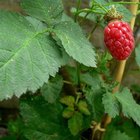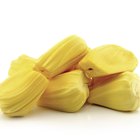
A homemade fruit cordial (also known as a fruit liqueur) can easily be made by combining alcohol, sugar, and a fruit flavoring agent: in this case, fresh pears.
I am new to making cordials, having just been introduced to them this fall. I loved the idea of finding another fresh way to preserve the essence local fruit to enjoy in the months to come, though, so wanted to get started with a homemade version right away.
I played with a recipe I found in the November/December issue of Hobby Farm Home magazine, incorporating the ginger-lemongrass simple syrup I wrote about here. I can’t say for sure how it tastes yet, as cordials need time to rest so their flavors develop (that’s the only downside to this recipe: you’re supposed to wait more than 6 months to enjoy it), but I’m pretty sure it’s going to be delicious.
If you envision yourself sipping this next spring, I suggest you get your own cordial started right away…
Spiced Pear Cordial Recipe
yield: about 6 cups
adapted from the November/December issue of Hobby Farm Home magazine
Ingredients:
- Simple syrup made by boiling 2 cups sugar with 2 cups of water over medium heat (stir until sugar dissolves, then allow to come to room temperature), or use 2-3 cups of an herb infused simple syrup, like I did
- 6 cups peeled and thinly sliced local pears (I used 6 large bosc pears)
- 1 teaspoon organic lemon zest or Meyer lemon zest
- 2 cups vodka (or brandy, rum, or whisky)
Directions:
- In a sterilized gallon-sized glass jar, combine pears and lemon zest. Pour the simple syrup over the pears, then add the vodka. If 2 cups vodka is not enough to fill the jar, add as much as is necessary. Cap tightly and shake to combine. Allow to “rest” in a cool, dark place for about 4 weeks, shaking every couple of days.
- Strain the pears out by pouring through a fine-mesh sieve (or use cheesecloth). Pour liquid into sterilized glass jars and and allow to rest undisturbed for another 6 months.
- Strain out any additional sediment through cheesecloth before pouring into sterilized jars one last time. Enjoy as is, over ice, mixed with seltzer or used in cocktails. I imagine it will also be wonderful over ice cream. I think this would make a nice gift when presented in a decorative bottle, as well.

–Winnie Abramson writes the organic gardening and food blog Healthy Green Kitchen.
Photo credits: Winnie Abramson
Related Articles

What Is a Good Substitute for ...

How to Make Sparkling Alcohol-Free ...

How to Make Strawberry Slushies

Candied Fruit for Baking

Tayberry Jam Recipe

How to Make a Jackfruit Shake With Milk

How to Make Limoncello

What Is a Good Substitute for Cherries?

Raspberry Liqueur Substitute

Homemade Limoncello Recipe

How to Infuse Grappa

Desserts That Can Be Made With Puff ...

How to Can Pickled Corn in Jars

How to Make Lemonade Using Meyer Lemons

How to Cook Agar-Agar Jam
The Popular Mixed Drinks of the 50s & ...

Baking With Juice Concentrates

How to Make Soursop Juice
How Long Is it Safe to Keep Frozen ...

How to Make Melon Ice Cream